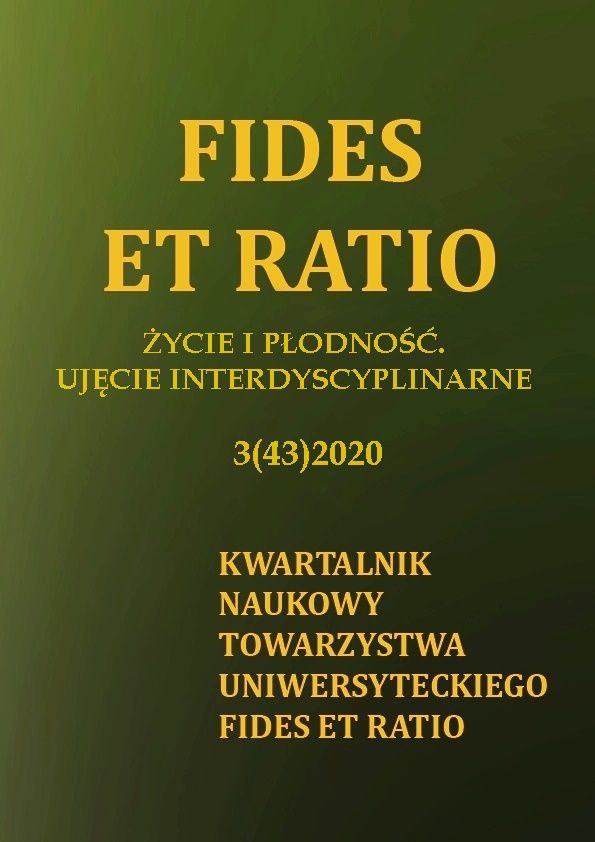Abstract
The basis for health literacy is – next to a healthy lifestyle and broadly defined prevention – observation signals flowing from one's own body. Many diseases and conditions of disturbed homeostasis of the body cause irregularities of menstrual cycle and disorders of puberty in girls. Fertility awareness methods (FAM), based on tracking selected biomarkers, are particularly useful for self-observation of the menstrual cycle and should become a tool in the daily work of physician, as well as an element of prevention of reproductive health disorders. The paper discusses the basics of the physiology of puberty in girls and the development of menstrual cycles in first years after menarche, taking into account the differences from normal cycles in adult women and individual variability of maturation of the hypothalamus – pituitary – ovary axis in girls. Examples of cycle charting (observation cards) of adolescent girls are also presented. Preliminary recommendations regarding the correctness of the course of the menstrual cycle based on FAM give an opportunity for the physician to cooperate with the patient and the qualified practitioner of the selected method.
References
Czajkowska, M., Plinta, R., Rutkowska, M., Brzęk, A., Skrzypulec-Plinta, V., Drosdzol-Cop, A. (2019). Menstrual Cycle Disorders in Professional Female Rhythmic Gymnasts. International Journal of Environmental Research and Public Health, 16 (8), 1470, https://doi.org/10.3390/ijerph16081470.
Drosdzol-Cop, A., Gawlik, A. (2018). Wybrane zagadnienia ginekologii dziecięcej
i dziewczęcej, (w:) B. Pyrżak, M. Walczak (red.), Endokrynologia Wieku Rozwojowego, 595-630, Warszawa: Wydawnictwo PZWL.
Drosdzol-Cop, A., Tymińska-Bandoła, A., Bil, A., Stojko, R., Skrzypulec-Plinta, V. (2017). Zespół policystycznych jajników u nastolatek – diagnostyka i leczenie, Ginekologia po Dyplomie, 03, https://podyplomie.pl/ginekologia/26793,zespol-policystycznych-jajnikow-u-nastolatek-diagnostyka-i-leczenie.
Hilgers, T. (2004). The Medical & Surgical Practice of NaProTECHNOLOGY, Pope Paul VI Institute Press, Omaha, Nebraska, USA.
Ibáñez, L., Díaz, M., García-Beltrán, C., Malpique, R., Garde, E., López-Bermejo, A., de Zegher, F. (2020). Toward a Treatment Normalizing Ovulation Rate in Adolescent Girls With Polycystic Ovary Syndrome, Journal of the Endocrine Society, 4 (5),bvaa032. https://doi.org/10.1210/jendso/bvaa032.
Ibáñez, L., Oberfield, S.E., Witchel, S., Auchus, R.J., Chang, R.J., Codner, E., Dabadghao,
P., Darendeliler, F., Elbarbary, N.S., Gambineri, A., Garcia Rudaz, C., Hoeger, K.M., López-Bermejo, A., Ong, K., Peña, A.S., Reinehr, T., Santoro, N., Tena-Sempere,
M., Tao, R., Yildiz, B.O., Alkhayyat, H., Deeb, A., Joel, D., Horikawa, R., de Zegher,
F., Lee, P. (2017). An International Consortium Update: Pathophysiology, Diagnosis, and Treatment of Polycystic Ovarian Syndrome in Adolescence, Hormone Research in Paediatrics, 88 (6), 371-395. https://doi.org/10.1159/000479371.
Khashchenko E, Uvarova E, Vysokikh M, Ivanets, T., Krechetova, L., Tarasova, N., Sukhanova, I., Mamedova, F., Borovikov, P., Balashov, I.; Sukhikh, G. (2020). The Relevant Hormonal Levels and Diagnostic Features of Polycystic Ovary Syndrome in Adolescents, Journal of Clinical Medicine, 9 (6), E1831. https://doi.org/10.3390/jcm9061831].
Milczarek, M., Kucharska, A., and Borowiec, A. (2019). Difficulties in diagnostics of polycystic ovary syndrome in adolescents – a preliminary study. Pediatric Endocrinology Diabetes and Metabolism, 25 (3), 122-126. https://doi.org/10.5114/pedm.2019.87177.
Otto-Buczkowska, E., Grzyb, K., Jainta, N. (2018). Polycystic ovary syndrome (PCOS) and the accompanying disorders of glucose homeostasis among girls at the time of puberty, Pediatric Endocrinology Diabetes and Metabolism, 24 (1), 38-42. https://doi.org/10.18544/PEDM-24.01.0101.
Pałasz, W., Ziora-Jakutowicz, K., Oświęcimska, J., Gorczyca, P., Ziora, K. (2018). Trends of underweight and obesity prevalence among adolescent girls in the selected population of the Silesian Agglomeration. Pediatric Endocrinology Diabetes and Metabolism, 24 (1), 20-33, https://doi.org/10.18544/PEDM-24.01.0099.
Peña, A.S., Witchel, S.F., Hoeger K.M., Oberfield, S.E., Vogiatzi, M.G., Misso, M., Garad,
R., Dabadaghao, P., Teede, H.(2020). Adolescent polycystic ovary syndrome according to the international evidence-based guideline. BMC Medicine, 18 (1), 72. https://doi.org/10.1186/s12916-020-01516-x.
Rotterdam ESHRE/ASRM-Sponsored PCOS Consensus Workshop Group. (2004). Revised 2003 consensus on diagnostic criteria and long-term health risks related to polycystic ovary syndrome. Fertility and Sterility, 81 (1), 19-25. https://doi.org/10.1016/j.fertnstert.2003.10.004.
Urbańska, E., Hirnle, L., Olszanecka-Glinianowicz, M., Skrzypulec-Plinta, V., Skrzypulec-Frankel, A., Drosdzol-Cop. A (2019). Is polycystic ovarian syndrome and insulin resistance associated with abnormal uterine bleeding in adolescents?. Ginekologia Polska, 90 (5), 262-269. https://doi.org/10.5603/GP.2019.0049.
